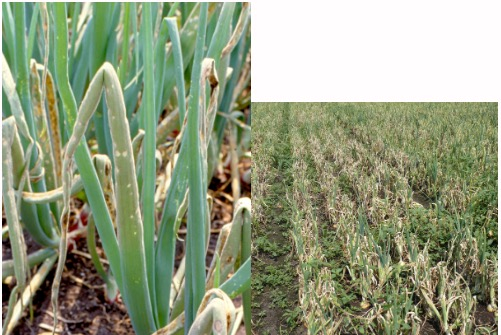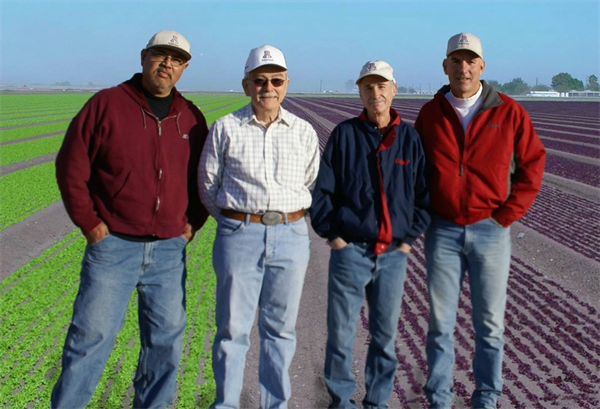Dec 13, 2023
Vegetable Crop Production Capacity in the U.S.
It has been consistently recognized for several decades that over 90% of the leafy green vegetables consumed in the United States (US) and Canada from November through March each year are grown in the lower Colorado River Valleys, primary in the Yuma area valleys and the Imperial Valley (Renick, 2013 and Satran, 2017).
In some recent articles published in the Agronomy Journal, Dr. Ashley McCarthy and her colleagues at the University of Vermont have evaluated the differences between nutritional recommendations in the US versus actual consumption. They also studied vegetable crop production capacities in the US and total cropland requirements to meet vegetable crop production needs if everyone in the US consumed the recommended amounts of vegetables for good nutrition (McCarthy et al., 2022 and McCarthy et al., 2023).
In this project, McCarthy and her colleagues conducted a set of “thought” experiments. To address their first question regarding our current capacity in the US to support Americans with diets complete with the daily recommended fruits and vegetables, they found that current domestic production would only provide 29% of the fruit and 53% of vegetable crops to meet that need.
They next examined climate, soils, topography, and other biophysical aspects of the land in the US. From this they determined that the US has an abundance of land suitable for fruit and vegetable crop production, more than 741K acres (300M ha) among the contiguous U.S. states. However, they do point out that less than half of the land they identified is currently used for crop production.
They determined that of all the land in the US that could potentially go into fruit and vegetable crop production, 47% is currently in agriculture and 53% is not. Many agronomists and soil scientists in the US would offer significant doubt about the realistic possibility of having that much land available for crop production, not to mention the difficulty of converting that land into agricultural production.
The next question in their series of thought experiments was to evaluate the capacity in the U.S. to produce sufficient fruits and vegetables to make the nation self-reliant and not depend on imported fruits and vegetables. From their analysis, McCarthy and her colleagues determined that U.S. could indeed become self-sustaining for fruit and vegetable crop production, even if all Americans consumed the daily recommended amounts of fruits and vegetables.
The results from the work of McCarthy and her colleagues are interesting but they are not without some significant points of concern or weaknesses in their argument. For example, they recognize that to realize the projected capacities for fruit and vegetable crop production in the U.S. would require more than a doubling of the current land currently devoted to these crops. Currently, approximately 11.6M acres (4.7M ha), or 3% of the U.S. cropland is devoted to fruit and vegetable crops. To meet the objectives of these experiments, the U.S. would have to increase cropland devoted to fruit and vegetable production to 30M acres (12.2M ha).
I am rather dubious of the capacity to convert nearly 20M acres (8M ha) from current crop production systems to a fruit or vegetable crop production system in the U.S. As we know in the fruit and vegetable production systems in the southwest U.S., there is a tremendous amount specialized equipment, infrastructure, and expertise required to develop and manage systems of this type. In addition, the labor requirements for fruit and vegetable crops are much larger than the large acreage commodity crops that are being grown on most of the farmland in the U.S.
Of the numerous questions that arise from a review of the experiments and conclusions of McCarthy and her colleagues, one major point that they do also recognize is the lack of consideration of water resources necessary to support this level of fruit and vegetable production in the US. That point is a major limitation and it is exacerbated by the changing climate that we are experiencing throughout the western U.S.
There are some good points that come from studies like these. For example, should self-reliance for food production be a strategic goal in the US? Currently, the US imports a lot of food products, including many fruits and vegetables (non-leafy green vegetables). Domestic production provides over 90% of the leafy green vegetables consumed in the US and Canada from November through March each year are grown in the lower Colorado River Valleys, primary in the Yuma area valleys and the Imperial Valley. This production is totally dependent on irrigation water from the Colorado River.
If that last question is answered affirmatively, this would have a huge impact on preserving farmlands and shifting from urban to agricultural land development.
This also brings up the consideration of regional food production systems in the US. For example, Arizona and certainly the southwestern region of the US could be self-reliant for food production if necessary. Considering the diverse mix of crops and animals grown and produced for food systems in Arizona and the region currently, this is quite feasible for crop production systems in the Southwest. Of course, the major limiting factor in providing this level of self-reliance in the desert Southwest is water.
These thought experiments have value, despite the practical flaws that can be identified. Very importantly, they are constructive in helping us recognize the tremendous present and future value of the fruit and vegetable crop production systems in the desert Southwest we currently have today.
Maintaining agricultural water allocations is important to support the production systems currently in place. It is also important to consider the food and nutritional needs of Americans today and in the future and how and where those crops will be grown to support these needs.
Considerations for Colorado River water allocations to agriculture for the future are extremely important. This is true not only to protect and support the systems currently in operation, but it is also an important aspect of food security for the US in the future.
References:
McCarthy, A. C., Griffin, T. S., Srinivasan, S., & Peters, C. J. (2023). Capacity for national and regional self-reliance in fruit and vegetable production in the United States. Agronomy Journal, 115, 647– 657.
https://doi.org/10.1002/agj2.21305
McCarthy, A. C., Srinivasan, S., Griffin, T., & Peters, C. J. (2022). A geospatial
approach to identifying biophysically suitable areas for fruit and vegetable
production in the United States. Agronomy Journal, 114, 2845–2859.
https://doi.org/10.1002/agj2.21138
Renick, O. 2013. Freezing California Lettuce Boosts Salad Costs: Chart of the Day
Bloomberg, 3 February 2013.
Satran, J. 2017. This Is Where America Gets Almost All Its Winter Lettuce Who knew? Huffingtion Post.
https://www.huffpost.com/entry/yuma-lettuce_n_6796398











